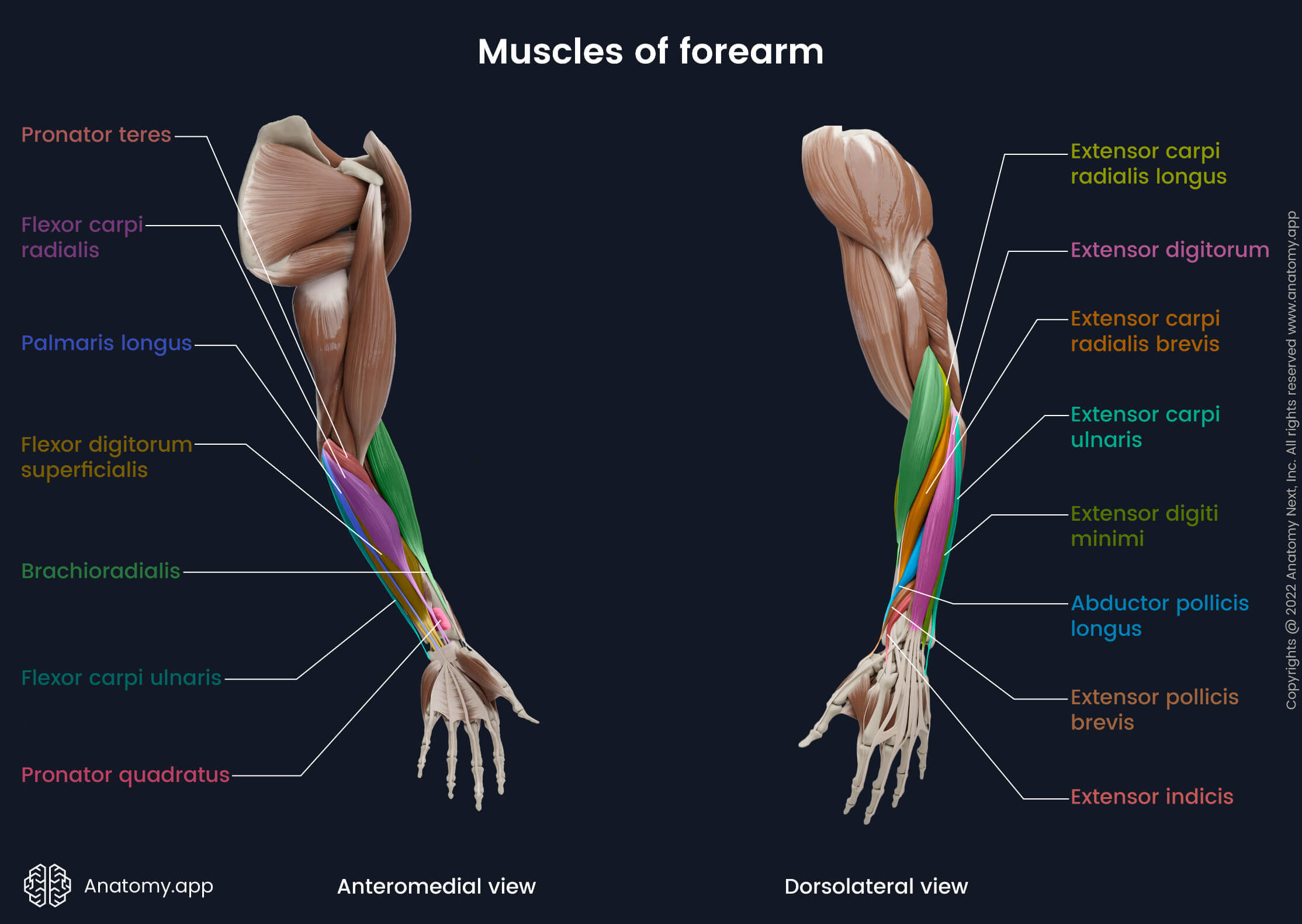- Anatomical terminology
- Skeletal system
- Joints
- Muscles
- Head muscles
- Neck muscles
- Muscles of upper limb
- Muscles of pectoral girdle
- Muscles of shoulder region
- Muscles of upper arm
- Muscles of forearm
- Anterior compartment
- Lateral compartment
- Posterior compartment
- Muscles of hand
- Thoracic muscles
- Muscles of back
- Muscles of lower limb
- Heart
- Blood vessels
- Lymphatic system
- Nervous system
- Respiratory system
- Digestive system
- Urinary system
- Female reproductive system
- Male reproductive system
- Endocrine glands
- Eye
- Ear
Extensor digitorum
The extensor digitorum (Latin: musculus extensor digitorum) is a superficial, long and slim muscle of the forearm that extends between the humerus and fingers. It belongs to the posterior compartment of the forearm muscles and lies in the first or superficial layer. As the name suggests, this muscle is known as one of the extensors.
| Extensor digitorum | |
| Origin | Lateral epicondyle of humerus |
| Insertion | Extensor expansions of 2nd to 5th fingers |
| Action | Extension of fingers |
| Innervation | Posterior interosseous nerve of radial nerve (C7, C8) |
| Blood supply | Anterior and posterior interosseous arteries, radial recurrent artery |


Origin
The extensor digitorum muscle originates from the lateral epicondyle of the humerus.
Insertion
In hand, the extensor digitorum splits into four tendons that insert in the extensor expansions of the second to fifth fingers.
Action
The extensor digitorum muscle provides finger extension at the second to fifth metacarpophalangeal and interphalangeal joints.
Innervation
The extensor digitorum is innervated by the posterior interosseous branch of the radial nerve (C7, C8). The radial nerve arises from the brachial plexus.
Blood supply
The extensor digitorum muscle receives arterial blood supply from the posterior and anterior interosseous arteries and radial recurrent artery. The first two arteries are branches of the common interosseous artery, while the radial recurrent artery arises from the radial artery.